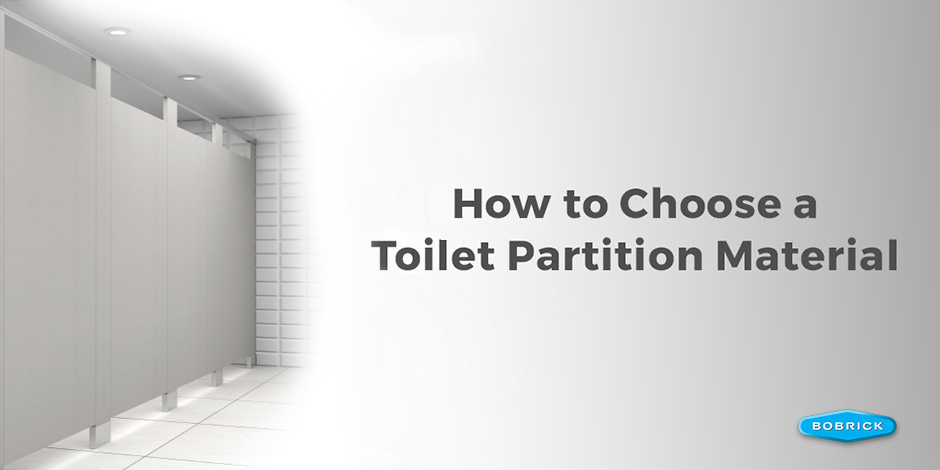

How To Choose A Toilet Partition Material
How to Choose a Toilet Partition Material
Today’s toilet partition systems are available with a nearly limitless selection of design options and configurations. From finishes to privacy features and hardware to mounting options, architects and designers have a wide variety of options available to meet demanding project requirements.
One of the most critical decisions to make is the choice of material. A toilet partition system’s material can impact:
- The durability of a partition system and its warranty
- A system’s ability to meet critical codes and requirements
- Its resistance to graffiti and scratching
- How the partition system is cleaned and maintained
…and much more. Each partition material has unique advantages and disadvantages, depending on the building application. Before specifying a partition material, review not only these considerations but also our Continuing Education course, Specifying Code-Compliant Toilet Partitions on AECDaily.
Fire Code Considerations
In the United States, model codes and standards pertaining to fire safety and construction are regulated by the International Code Council (ICC) and the National Fire Protection Association (NFPA). While not mandatory until adopted by city, county, state, and federal government jurisdictions, adherence to these codes is often critical, as many major corporations require compliance regardless of governmental policy.
Most relevant to the specification of partitions today are the International Building Code (IBC), International Fire Code (IFC), the NFPA 101, Life Safety Code, and NFPA 1, Fire Code. As of 2006, the model codes written by both ICC and NFPA clearly regulate toilet room privacy partitions as an interior finish. This is an important distinction—in recent years, some jurisdictions have interpreted fire and building code requirements for interior finish as being unrelated to restroom privacy partitions. Although these standards are not currently regulation or law in several jurisdictions, prudent architects and specifiers should adhere to them.
Architects, interior designers and specifiers should always request complete ASTM E84, UL 723, or NFPA 286 room-corner test compliance documents from HPL, CL, and SCRC toilet partition manufacturers. It is also important to insist on unmodified NFPA 286 room-corner test compliance documentation from PP and HDPE toilet partition manufacturers prior to specification or purchase.
Building Type Considerations
The building type can help form a baseline for choosing a partition material, depending on whether the facility is prestige, standard-use, or heavy-traffic.
Prestige Buildings
Corporate headquarters, class-A office projects, civic centers & major universities
- Moderate-low traffic
- Minimal use and abuse
- Architectural design excellence, quality materials and equipment
Standard-Use Buildings
Commercial office facilities, healthcare centers, hospitality projects & manufacturing plants
- Moderate-heavy traffic
- Moderate-heavy vandalism
- Specification typically price-driven
Heavy Traffic Buildings
K–12 schools, shopping malls, amusement and recreation facilities & transportation centers
- Heavy traffic
- Possible high incidence of vandalism
Selecting a Material
Each partition material has unique advantages and disadvantages, dependent on the building application.
Solid Color Reinforced Composite (SCRC)
- Homogeneous color
- Hard, yet repairable material; gouges/scratches can be sanded out
- Water resistant; can be “hosed down” for cleaning
- Surface is highly resistant to graffiti, scratches, dents and water damage
- Can achieve ICC class-B interior wall finish classification
- 25-year warranty
High-Pressure Laminate (HPL)
- Extensive color and pattern options
- Improved graffiti, scratch, and dent resistance (although deep scratches can expose dark kraft paper, which may absorb odors and/or swell when exposed to excessive moisture)
- Visible brown or black edges
- Relatively inexpensive
- Can obtain a class-B interior wall finish classification from the IBC
- Special laminates may increase costs and lead time
- Limited warranty
Compact Laminate (CL)
- Water-resistant and can be “hosed down” for cleaning
- Dent-, scratch-, and graffiti-resistant
- Available in a wide variety of colors
- Can achieve ICC class-A or B interior wall finish classification
High-Density Polyethylene (HDPE)
- Homogeneous color, which allows for gouges and scratches to simply be sanded out.
- Water-resistant for easy cleaning
- High recycled content
- Extended warrant
- Graffiti tends to “ghost” into HDPE and cannot be fully removed
- Softest of the materials; can easily be scratched and dented
Painted Metal & Stainless Steel
- Wide availability and low cost—stainless steel is typically costlier
- Qualify as class-A interior wall finishes under the IBC
- More prone to rusting, dents, scratches, and odor absorption than other options
- Painted metal and stainless steel partitions typically have a limited warranty
- Graffiti is also more difficult to remove from painted metal partitions
TAKE THE CEU COURSE
Earn an AIA/CES Learning credit with Bobrick’s course, Specifying Code-Compliant Toilet Partitions.
Register Now >


